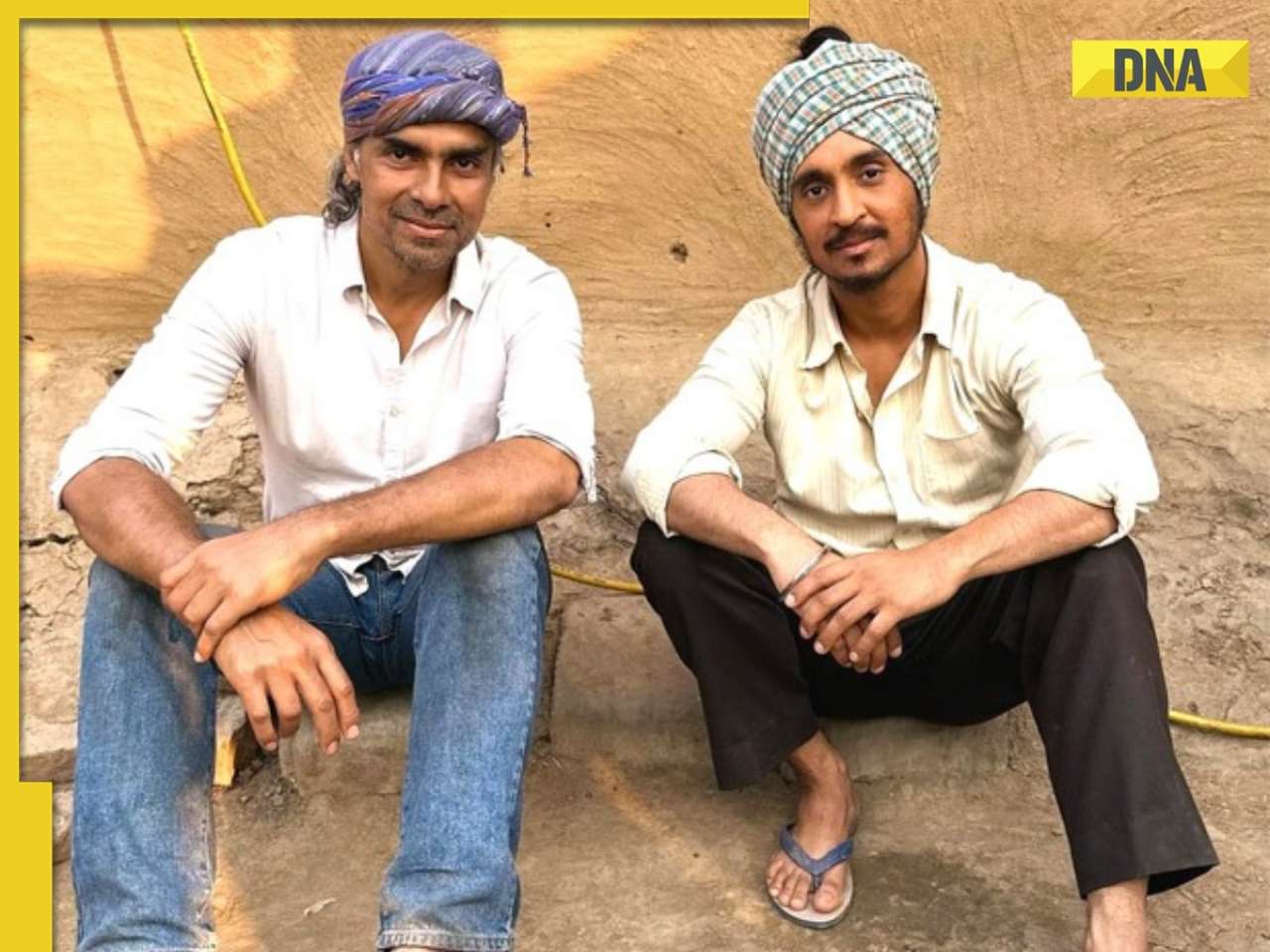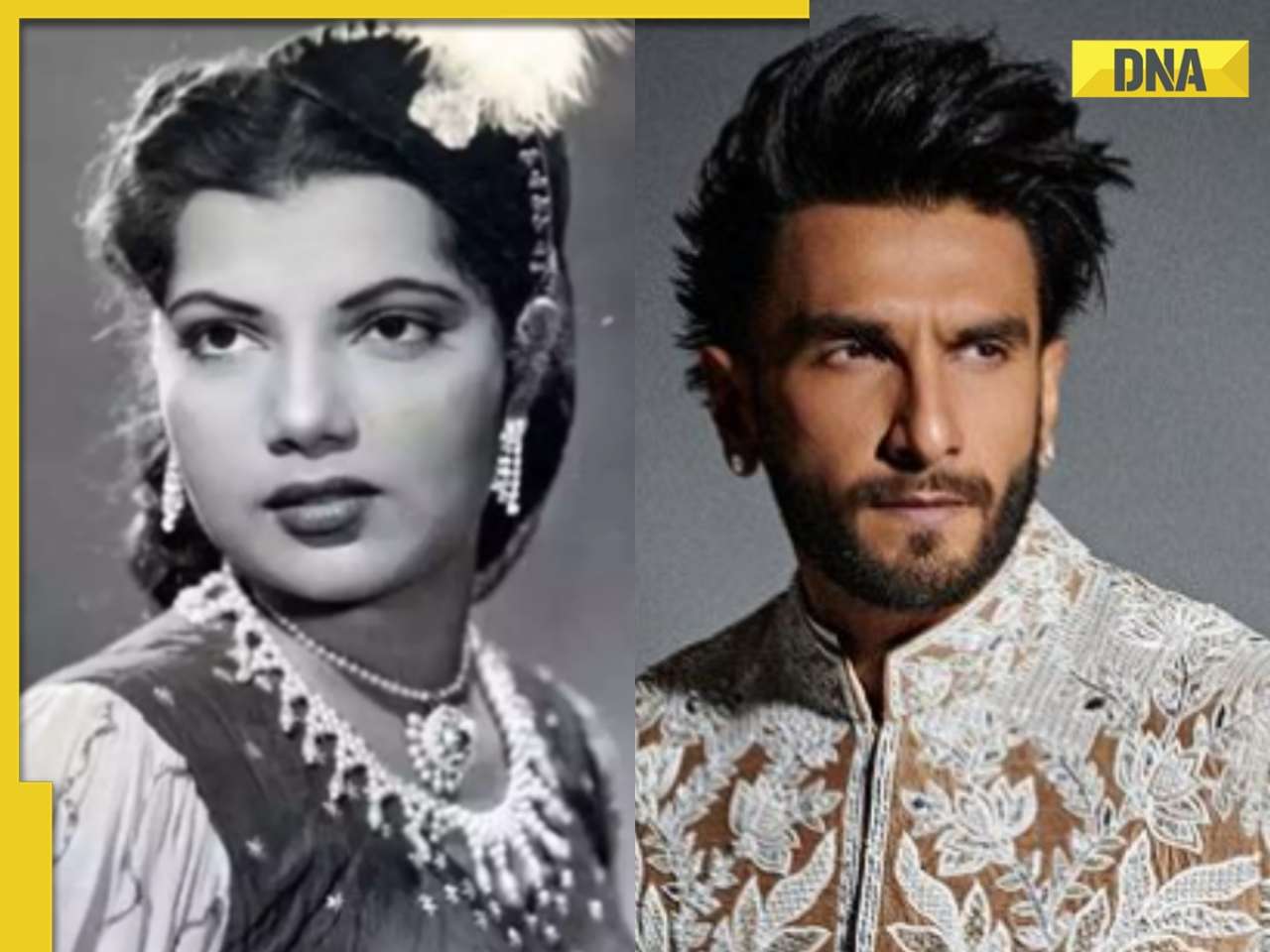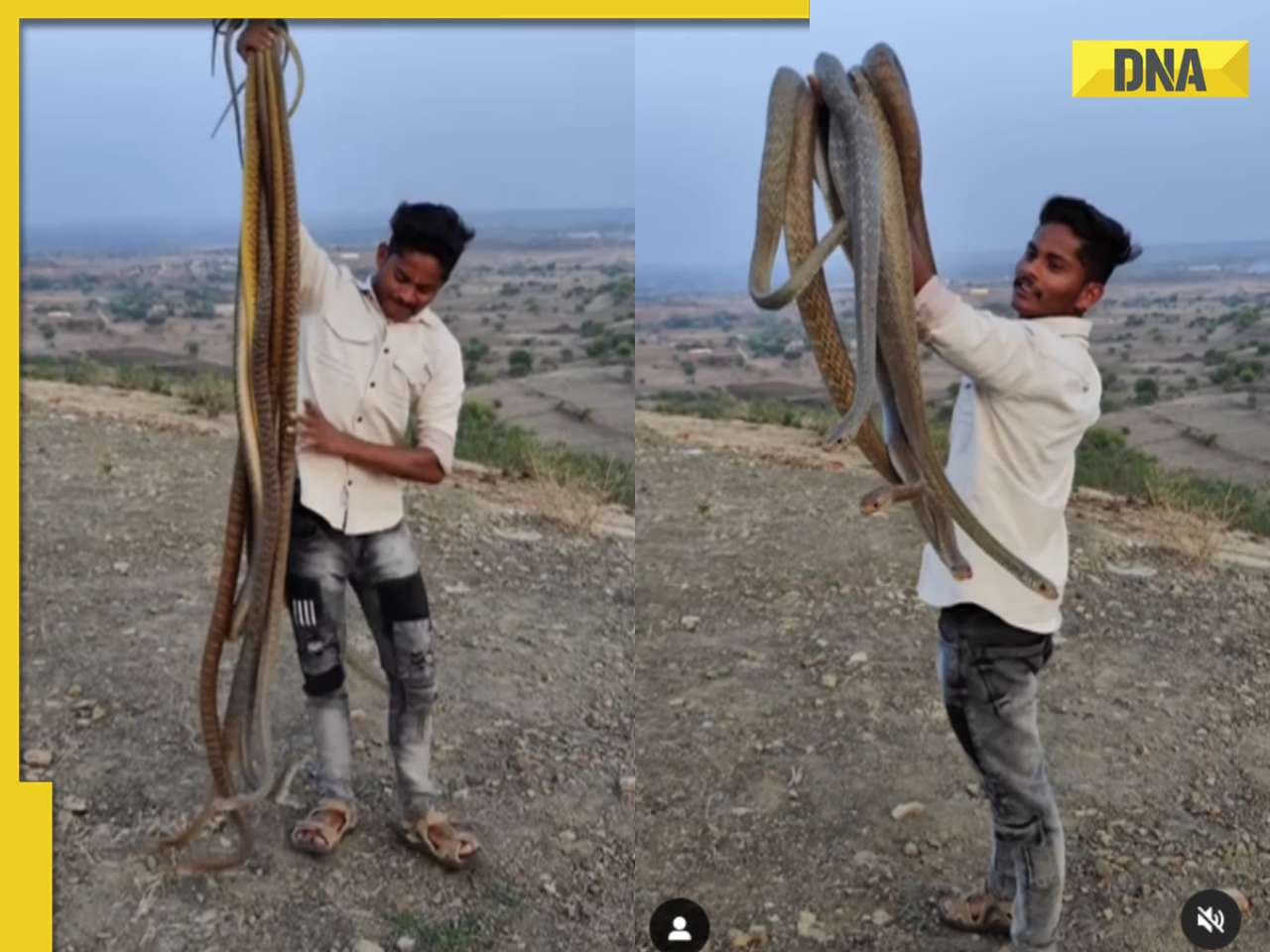...is so varied, it evokes different emotions in different people. Pooja Bhula asks those deeply involved in food about the one thing that summarises our diverse cuisine for them
THE STORIES BEHIND OUR INGREDIENTS & RECIPES
Joel Basumatari, Chef, restaurateur and Naga delegate for Terra Madre

Each tribe and community of India has a story to tell about their food and the folklore attached to it. There's so much to learn about them. We have plenty to discover about our indigenous cuisines, but have not even covered 10 per cent of it. The one I love to tell people is a Sema (Naga tribe) folklore about fermented soya bean or akhuni/axone. It goes like this — there was a small girl, who was being taken care of by her uncle and aunt. The uncle would go out often and the aunt would not be good to her. She would wrap just boiled soya beans in banana leaves and send the little girl to the paddy fields. As it was far from appetising, the little girl wouldn't eat it and would keep the parcel aside. A couple of days later, she felt really hungry on reaching the fields, and dug out one of her old parcels. That's how she discovered akhuni and liked it so much that soon she began selling it and turned it into a successful business. Today, we usually eat it as a chutney, cook it with yam or smoked pork.
Recipe:
Awoshi kipiki ngo axone (Smoked pork with fermented soya bean)
1 kg smoked pork
200 gm fermented soya bean (axone)
10 dried, red chillies
20 mejenga seeds (zanthoxylum), broiled and powdered
10 gm local ginger and garlic
Salt as per taste
Method: Wash smoked pork with hot water and cut into big pieces. Cook it for 5 minutes. Then add to it axone, whole dried-chilli, salt and sufficient water, and continue to cook. After a few minutes, remove chillies and grind them with a pestle and mortar. Add it to the meat when it's tender and well-cooked. After a few minutes, add crushed ginger and garlic, then the mejenga seeds, let it cook some more and serve with steaming-hot rice.
MASTERY OVER SPICES
Rocky Singh, Anchor, Food enthusiast, Highway On My Plate

The taste of India is 3,000 years of spice and the beautiful combinations that we work out of them. We are better than anyone has ever been, is, or will be in the control of so many flavours and unifying them to bring out unique flavours. Even when we use the same spices, we just change the amount a tad and come out with vastly different flavours. It really changes the way taste works. We are masters of that and that's the flavour of India for me. And spice is not necessarily chilli, but all the masalas that go in our daily cooking, and so many others.
Best place to experience it is: Indian Accent in New Delhi. Mayur and I both believe that Manish Mehrotra, who runs their kitchen, is the finest Indian chef in the world right now. His ability to take out very simple Indian flavours, the real comfort food from way back, things you would traditionally cook at home, simplify them and put them out with unbelievable presentation is unmatched. We've taken people there several times for a real slice of India, including seven to ten of the world's top women chefs, who once happened to come down at the same time. In Bengaluru, it would be Karavalli; in different regions there are few chefs who are able to do this.
REGIONAL FOOD, ADAPTABILITY & COORGI BAMBAIE PALIA
Naren Thimmaiah, Executive chef at The Gateway Hotel, Bengaluru

After becoming familiar with most cuisines of the world, since the last three-four years, we've begun to take pride in our own regional cuisine. And that's where the taste of India truly lies.
It's essentially what we eat at home, something that makes us feel good even by just thinking about it. In my case, it's my mother's bambaie palia (bamboo shoot stir-fry). Though as a chef, I make it myself, when I go home to Coorg, I ask her to prepare it for me. To this day, eating seasonally is a norm in Coorg and bamboo shoot, which grows wild in the forest and by the river, is harvested in the monsoons. To remove any toxic elements, finely chopped roundels of bamboo shoot are soaked in water, first for one and a half days, then for another full day after changing the water. The flavouring is simple, consisting of sauteed onion, split green chillies and mustard seeds and then simmered with turmeric and salt. As a rice-eating community, we pair it with rice ottis (rotis) made with a dough of boiled rice and rice flour. This dish is prepared in every home, but each one adds their own touch. That's what makes Indian food enigmatic. French cuisine is very exact, but though we've started writing our recipes, when we actually cook, we take the spices in our hand and go by approximation. Yet, we manage to reproduce the same taste! Taking recipes as a reference, we have the flexibility to tweak it to our liking, adapt it to our tastebuds.
GINGER-GARLIC & THE HUMBLE DAL
Vikram Doctor, Food writer

It's not true for everyone, but ginger-garlic gives a certain background and depth of flavour to Indian food. For the Japanese it's umame, for the Chinese and to some extent the West, it's long-cooked stock. Hing too plays that role. These flavours are not in the forefront, but create a back note. Unfortunately, ginger-garlic also creates a certain kind of uniformity and has become a shortcut in home-cooking to give that depth to dal, meat, or any other dish thanks to readymade pastes. In fact, we tend to overuse them and everything starts to taste the same, so now I've stopped using it to a large extent.
Best dish to experience it in: is dal. The one unacknowledged pillar of Indian food. We tend to talk about biryani, but other places too have such rice-based dishes. Whereas dal is really essential to India and for a large part of the population, it's the only source of protein. There are minimum support prices for wheat and rice, but not for dal; you see, while the other two can be standardised, each region has its own kind of dal. In Mumbai, Bandra's National Restaurant makes it best.There are four types of dal cooked over charcoal everyday – rajma, chole, kala dal and sukha dal (made of urad) and you can ask for a combination too!
INGENUITY OF STREET FOOD
Marryam Reshii, Food writer

A Dutch friend once pointed out how every sub-cuisine he discovered in country – from trips to Manali, Kerala and what not – is different, but gets unified under the term Indian cuisine and it all makes sense. What links them is the spices. It's interesting that apart from black pepper (grown in Kerala since time immemorial), turmeric (India has the most number of wild sub-species), ginger and green cardamom, hardly any spices are endemic to India. Chillies, coriander, jeera, cloves, nutmeg, cinnamon...came to us as imports at varying periods of time, but we've taken it all, made it our own and matched it to our own convenience. Take a pudi of methi to an Athens market and tell people it's fenugreek, which was once fed to Greek horses, they'll be all excited, but will not have heard of it. Whereas, if you tell people here that these are not Indian, they'll start fighting with you!
Spices are best tried in: chaat. It's meant to create an explosion of flavours, but like any street-side food it's made with much ingenuity, despite severe budgetary constraints and still has spices in it. Take for instance, Benaras' tamatar ki chaat made of roasted tomatoes cooked with jeera, other masalas, ghee or khoya and raisins and a garnish of minitature mathris, as chaat must also be textural. But even the mathri has ajwain to cut through the heaviness.
COMPLEXITY, DIVERSITY & GRANNY'S RISTA KOFTA
Zorawar Kalra, Founder and MD, Massive Restaurants

With several quality Indian restaurants being recognised in Europe and North America, we are on the way to becoming the biggest exporters of our culture through food – a great milestone to achieve in 70 years. Bollywood has done a good job of it, but the Indian food business is 40 times larger! Having evolved for centuries, our cuisine is the most sophisticated with unmatched depth and philosophy. The beauty of Indian food lies in its complexity, diversity and an unbelievable blend of hundreds of spices that make it unique.
It all came together in: my grandma's rista kofta. A Kashmiri dish, it was labourous to make. She would start preparing it the night before for the next day's lunch. The meat alone took hours to beat. Like the original recipe, she never added butter or cream to the onion-tomato gravy, but liked to keep it coarse rather than smooth and her meatballs would be smaller than the usual size. The fat content is supposed to stick to your tongue. Though it only had a hint of chilli, it was well-spiced and flavourful. Back then, Delhi only had a couple of Kashmiri restaurants where it could be found. About once a month, when she cooked it, I would wait to return from school and go home running all the way from the bus stop, for lunch. That a Kashmiri dish was the favourite of a typical Punjabi house like ours also shows how food unifies us.
Kuch meetha ho jaye?
PEDAS & DRY-FRUIT BASED SWEETS
Mohammad Qureshi, Owner, Suleman Mithaiwala

I'm personally not fond of sweets, but we supply to all states of India and have clients abroad too. As aflatoon is our specialty, we get maximum delivery demand for it, along with our halwas and laddoos. But other than that, as our area (Mohammed Ali Road, Mumbai) is full of 'Mohammedans', dry-fruit based sweets like kaju katli move the most. The corporates prefer ordering our pedas, laddoos and kaju katli because they cater to people from various communities. Bengali sweets are more popular with youngsters and newly married couples.
PEDAS, BOONDI LADDOO & RASGULLA
Vaman Desai, Owner, Desai Bhaishankar Gaurishankar

From Kashmir to Kanyakumari, you'll find pedas and boondi laddoo everywhere. These like our national sweets because milk, besan and ghee, which are used to make these sweets are available everywhere. And so, since the olden days, we've had a tradition of burning milk to make mawa. Next in line would be rasgulla. About 50 years ago, my grandfather was the first to get it made in Mumbai. Ghasitaram had them too, but theirs were sourced from Kolkata; we brought down a Bengali fellow to offer it fresh. It was a new sweet and the preparation technique was different too. We put it out, adding to it other Bengali sweets like ras malai and malai sandwich, to test and today, it's our bestselling sweet. Plain and simple, rasgullas have a wide appeal because many want to avoid colour in their food, or like their less sweet (squeeze the rasgulla and the chashni's out) and prefer something lighter than mawa sweets. Everyone's become very health conscious.
![submenu-img]() 'They unilaterally took some measures': EAM Jaishankar on new Nepal 100 rupee currency
'They unilaterally took some measures': EAM Jaishankar on new Nepal 100 rupee currency![submenu-img]() Meet Ice Cream Lady of India, who built Rs 6000 crore company, started with small investment of Rs…
Meet Ice Cream Lady of India, who built Rs 6000 crore company, started with small investment of Rs…![submenu-img]() ‘Canada a rule-of-law country’: PM Trudeau after 3 Indian arrested over Hardeep Nijjar's murder
‘Canada a rule-of-law country’: PM Trudeau after 3 Indian arrested over Hardeep Nijjar's murder![submenu-img]() Viral video: Specially-abled girl’s energetic dance to Bollywood song wows internet, watch
Viral video: Specially-abled girl’s energetic dance to Bollywood song wows internet, watch![submenu-img]() 'Baap re baap': Imtiaz Ali reveals Diljit Dosanjh was scandalised by old women's 'vulgar' improvisation on Chamkila set
'Baap re baap': Imtiaz Ali reveals Diljit Dosanjh was scandalised by old women's 'vulgar' improvisation on Chamkila set![submenu-img]() DNA Verified: Is CAA an anti-Muslim law? Centre terms news report as 'misleading'
DNA Verified: Is CAA an anti-Muslim law? Centre terms news report as 'misleading'![submenu-img]() DNA Verified: Lok Sabha Elections 2024 to be held on April 19? Know truth behind viral message
DNA Verified: Lok Sabha Elections 2024 to be held on April 19? Know truth behind viral message![submenu-img]() DNA Verified: Modi govt giving students free laptops under 'One Student One Laptop' scheme? Know truth here
DNA Verified: Modi govt giving students free laptops under 'One Student One Laptop' scheme? Know truth here![submenu-img]() DNA Verified: Shah Rukh Khan denies reports of his role in release of India's naval officers from Qatar
DNA Verified: Shah Rukh Khan denies reports of his role in release of India's naval officers from Qatar![submenu-img]() DNA Verified: Is govt providing Rs 1.6 lakh benefit to girls under PM Ladli Laxmi Yojana? Know truth
DNA Verified: Is govt providing Rs 1.6 lakh benefit to girls under PM Ladli Laxmi Yojana? Know truth![submenu-img]() Streaming This Week: Heeramandi, Shaitaan, Manjummel Boys, latest OTT releases to binge-watch
Streaming This Week: Heeramandi, Shaitaan, Manjummel Boys, latest OTT releases to binge-watch![submenu-img]() Remember Ayesha Kapur? Michelle from Black, here's how actress, nutrition coach, entrepreneur looks after 19 years
Remember Ayesha Kapur? Michelle from Black, here's how actress, nutrition coach, entrepreneur looks after 19 years![submenu-img]() Remember Heyy Babyy's cute 'Angel' Juanna Sanghvi? 20 year-old looks unrecognisable now, fans say 'her comeback will...'
Remember Heyy Babyy's cute 'Angel' Juanna Sanghvi? 20 year-old looks unrecognisable now, fans say 'her comeback will...'![submenu-img]() In pics: Arti Singh stuns in red lehenga as she ties the knot with beau Dipak Chauhan in dreamy wedding
In pics: Arti Singh stuns in red lehenga as she ties the knot with beau Dipak Chauhan in dreamy wedding![submenu-img]() Actors who died due to cosmetic surgeries
Actors who died due to cosmetic surgeries![submenu-img]() DNA Explainer: Why Harvey Weinstein's rape conviction was overturned, will beleaguered Hollywood mogul get out of jail?
DNA Explainer: Why Harvey Weinstein's rape conviction was overturned, will beleaguered Hollywood mogul get out of jail?![submenu-img]() What is inheritance tax?
What is inheritance tax?![submenu-img]() DNA Explainer: What is cloud seeding which is blamed for wreaking havoc in Dubai?
DNA Explainer: What is cloud seeding which is blamed for wreaking havoc in Dubai?![submenu-img]() DNA Explainer: What is Israel's Arrow-3 defence system used to intercept Iran's missile attack?
DNA Explainer: What is Israel's Arrow-3 defence system used to intercept Iran's missile attack?![submenu-img]() DNA Explainer: How Iranian projectiles failed to breach iron-clad Israeli air defence
DNA Explainer: How Iranian projectiles failed to breach iron-clad Israeli air defence![submenu-img]() 'Baap re baap': Imtiaz Ali reveals Diljit Dosanjh was scandalised by old women's 'vulgar' improvisation on Chamkila set
'Baap re baap': Imtiaz Ali reveals Diljit Dosanjh was scandalised by old women's 'vulgar' improvisation on Chamkila set![submenu-img]() This actor, who worked with Karan Johar and Farhan Akhtar, gave superhit shows, saw failed marriage, killed himself at..
This actor, who worked with Karan Johar and Farhan Akhtar, gave superhit shows, saw failed marriage, killed himself at..![submenu-img]() Did you know Ranveer Singh's grandmother was popular actress? Worked with Raj Kapoor; her career affected due to...
Did you know Ranveer Singh's grandmother was popular actress? Worked with Raj Kapoor; her career affected due to...![submenu-img]() India's highest-paid TV actress began working at 8, her Bollywood films flopped, was seen in Bigg Boss 1, now charges...
India's highest-paid TV actress began working at 8, her Bollywood films flopped, was seen in Bigg Boss 1, now charges...![submenu-img]() Shreyas Talpade wonders if his heart attack was due to Covid vaccine: 'We don’t know what we have taken inside...'
Shreyas Talpade wonders if his heart attack was due to Covid vaccine: 'We don’t know what we have taken inside...'![submenu-img]() IPL 2024: Faf du Plessis, Virat Kohli help Royal Challengers Bengaluru defeat Gujarat Titans by 4 wickets
IPL 2024: Faf du Plessis, Virat Kohli help Royal Challengers Bengaluru defeat Gujarat Titans by 4 wickets![submenu-img]() IPL 2024: Why is Sai Kishore not playing today's RCB vs GT match?
IPL 2024: Why is Sai Kishore not playing today's RCB vs GT match?![submenu-img]() 'Mumbai Indians ki kahani khatam': Ex-India star slams Hardik Pandya after MI's loss to KKR at Wankhede
'Mumbai Indians ki kahani khatam': Ex-India star slams Hardik Pandya after MI's loss to KKR at Wankhede![submenu-img]() LSG vs KKR, IPL 2024: Predicted playing XI, live streaming details, weather and pitch report
LSG vs KKR, IPL 2024: Predicted playing XI, live streaming details, weather and pitch report![submenu-img]() LSG vs KKR IPL 2024 Dream11 prediction: Fantasy cricket tips for Lucknow Super Giants vs Kolkata Knight Riders
LSG vs KKR IPL 2024 Dream11 prediction: Fantasy cricket tips for Lucknow Super Giants vs Kolkata Knight Riders![submenu-img]() Viral video: Specially-abled girl’s energetic dance to Bollywood song wows internet, watch
Viral video: Specially-abled girl’s energetic dance to Bollywood song wows internet, watch![submenu-img]() Viral video: Man educates younger brother about mensuration, internet is highly impressed
Viral video: Man educates younger brother about mensuration, internet is highly impressed![submenu-img]() Girl's wedding dance to Haryanvi song interrupted by mother in viral video, internet reacts
Girl's wedding dance to Haryanvi song interrupted by mother in viral video, internet reacts![submenu-img]() Viral video: Man fearlessly grabs dozens of snakes, internet is scared
Viral video: Man fearlessly grabs dozens of snakes, internet is scared![submenu-img]() This mysterious mobile phone number was suspended after three users...
This mysterious mobile phone number was suspended after three users...







































)





)
)
)
)
)
)
)
)




)
)
)
)
)
)